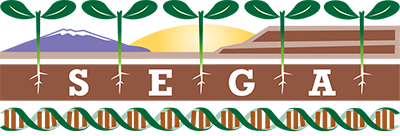You are here
Getting to the Root of Change: How Plants Respont to Novel Climates, Soils, and Soil Biota
Publication Type:
ThesisSource:
Forestry, Northern Arizona University , Volume Doctor of Philosophy in Forest Science, Flagstaff, Arizona, USA, p.137 (2019)Other Number:
ProQuest Number: 13807590URL:
https://www.sega.nau.edu/sites/default/files/Getting_to_the_Root_of_Change.pdfKeywords:
arbuscular mycorrhizal, climate change, ecto-mycorrhizal, Plants, soil biota, soilsAbstract:
<p>Global climate change is having profound and widespread effects on plant growth and survival. For the southwestern United States, warmer temperatures, more variable precipitation and more extreme droughts are expected. As plant populations experience these changes they may adapt and persist in place or may experience increasing environmental stress, eventually leading to mortality. An interesting component of environmental change is that different edaphic conditions may mitigate or exacerbate changes in the environment. As an example, coarse soils with low water holding capacity may exacerbate a change in water availability. Additionally, soil biota may play a critical role in facilitating plant survival during environmental change. Mycorrhizal fungi and plant growth promoting rhizobacteria both have been shown to have an impact on plant water uptake and physiological regulation. Interestingly, plants migrating to new locations maybe experiencing different novel environments by migrating across edaphic boundaries. Novel edaphic environments may have vastly different physical and chemical properties to which plant populations are adapted to. Furthermore, plant migration often occurs independently of the migration of associated soil microbes, including mycorrhizal fungi. Both arbuscular mycorrhizal (AM) fungi and ecto-mycorrhizal (EM) fungi play important roles in plant nutrient and water uptake. While plant responses to changes in climate, or even soils are fairly well understood, few studies have examined the impact of simultaneous change in climate, soil, and soil biota on plant performance To better understand adaptation to novel environments, the grass Bouteloua gracilis was grown at six field sites: two natal source sites, a +2°C site, a +3°C site, a -2°C site and -3°C site where the warmer sites simulate in situ warming and precipitation changes whereas the cooler sites simulate plant migration. In these papers we define home as soil communities from the plants site of origin, and away as soil communities from the transplant site. Plants at all of the transplant sites were then grown in the following combinations of soil and soil biota: 1) home soil, home soil biota, 2) away soil, home soil biota, 3) home soil, away soil biota and 4) away soil, away soil biota. Home refers to soil or soil biota from the same site as the plant, whereas away represents soil or soil biota from the transplant site. We found plants generally grew more in cooler/wetter environments than in warm/dry environments. In warm/dry environments, we also found that home soil biota generally facilitated plant growth and plants were larger than those grown with away soil biota. Away soils originating from one site in particular, had a dramatic negative effect on plant growth. In general, our results demonstrate that warmer temperatures have a negative effect on plant growth that can be mitigated partly by plant associated soil biota. In order to better understand plant physiological responses to changes in environment, we conducted a similar, parallel study with the tree Pinus ponderosa where we grew P. ponderosa at three field sites: one natal source site, a +2°C site and a -2°C site. We used the same treatment combinations described above. We monitored plant growth and leaf physiology metrics during the monsoon season. Trees grown at the +2°C site grew as large as those grown at the home site when they had their home soil biota, but not when they had their away soil biota. Trees with their home soil biota maintained nearly 2× the maximum net photosynthetic rate and stomatal conductance rate than those grown with their away soil biota. These results imply that home soil biota play a critical role in either water uptake or physiological regulation and away soil biota do not have the same effect. Lastly, we conducted a third experiment to more closely examine how the plant symbiosis with home soil biota influence plant growth differs from that with away soil biota. In this experiment, we grew the grass Bouteloua gracilis from a relatively wet and relatively dry site with either home or away soil biota. We then subjected plants to a watering regime that simulated or moderate drying or extreme drying and monitored plant growth. At the termination of the experiment we recorded fungal structures colonizing plant roots. We observed that home plant-soil biota combinations grew larger and had a greater portion of roots colonized by AM fungi structures for nutrient exchange and uptake (hyphae and arbuscules). In contrast, away plant-soil biota combinations resulted in a greater portion of roots colonized by less beneficial AM fungi structures that are used for fungal carbon storage (vesicles). These results may indicate that home plant-fungal pairings generally have greater mutualistic function, partially due to fungal allocation. Plants responding to changes in their environment will be exposed to a wide array of scenarios and thus exhibit a wide range of responses. In general, our studies indicate that soil biota mitigate some of the negative effects of warmer drier environments on plant growth. We also demonstrate that plants migrating to novel cooler and wetter environments are much less dependent on these soil biota, however, edaphic boundaries are likely to be a barrier to plant growth with certain soil environments a greater barrier than others.</p>
- Log in to post comments
- Google Scholar
- RTF
- EndNote XML
- RIS
Theme by Danetsoft and Danang Probo Sayekti inspired by Maksimer
